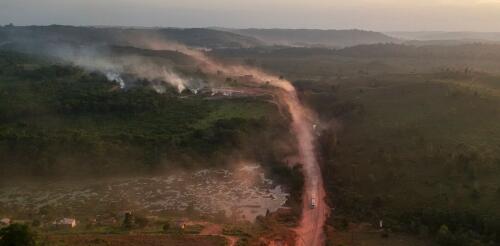Lula da Silva
Conservationists breathed a sigh of relief when Luiz Inácio Lula da Silva won Brazil’s presidential election in the fall of 2022. His predecessor, Jair Bolsonaro, had opened large parts of the Amazon region to business by crippling enforcement of environmental laws and turning a blind eye to land grabbing. It should come as no surprise that deforestation showed a sharp uptick. However, while Lula oversaw a more than 70% drop in deforestation during his first run as president in the early 2000s, the rainforest’s future remains deeply uncertain. That’s in part because Brazilian administrations, whether of the right or left, have all promoted an ambitious project to boost exports and the economy called the Initiative for the Integration of the Regional Infrastructure of South America, or IIRSA. The initiative focuses on new roads, dams and industry that can threaten the region’s fragile rainforest ecosystem – and harm the world’s climate i...
Brazil’s president-elect, Luiz Inácio Lula da Silva, was greeted with applause and cheers when he addressed the U.N. climate conference in Sharm el-Sheikh, Egypt, on Nov. 16, 2022. As he had in his campaign, Lula pledged to stop rampant deforestation in the Amazon, which his predecessor, Jair Bolsanaro, had encouraged. Forests play a critical role in slowing climate change by taking up carbon dioxide, and the Amazon rainforest absorbs one-fourth of the CO2 absorbed by all the land on Earth. These articles from The Conversation’s archive examine stresses on the Amazon and the Indigenous groups who live there. 1. Massive losses The Amazon rainforest is vast, covering some 2.3 million square miles (6 million square kilometers). It extends over eight countries, with about 60% of it in Brazil. And the destruction occurring there is also enormous. From 2010 to 2019, the Amazon lost 24,000 square miles (62,000 square kilometers) of forest – the equivalent of...

